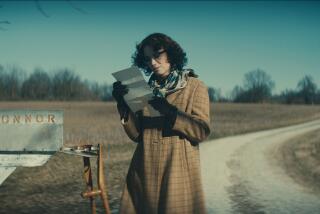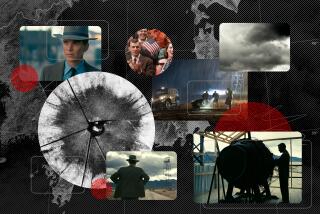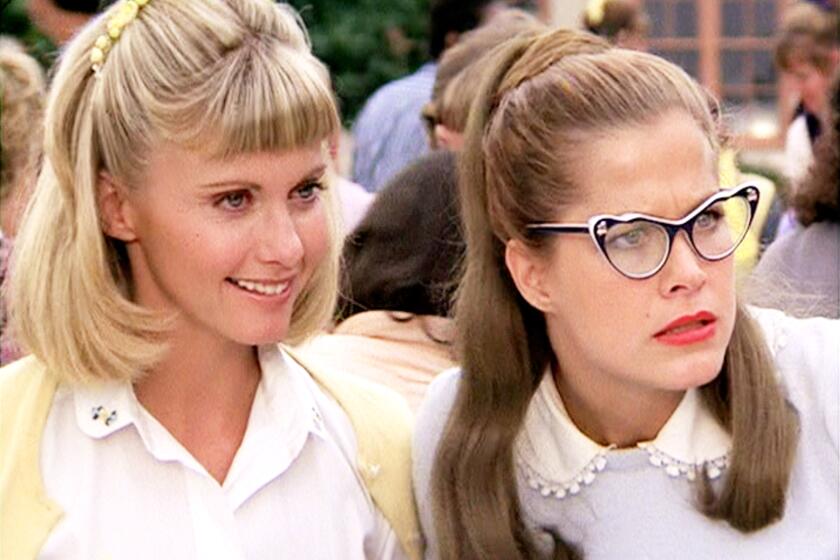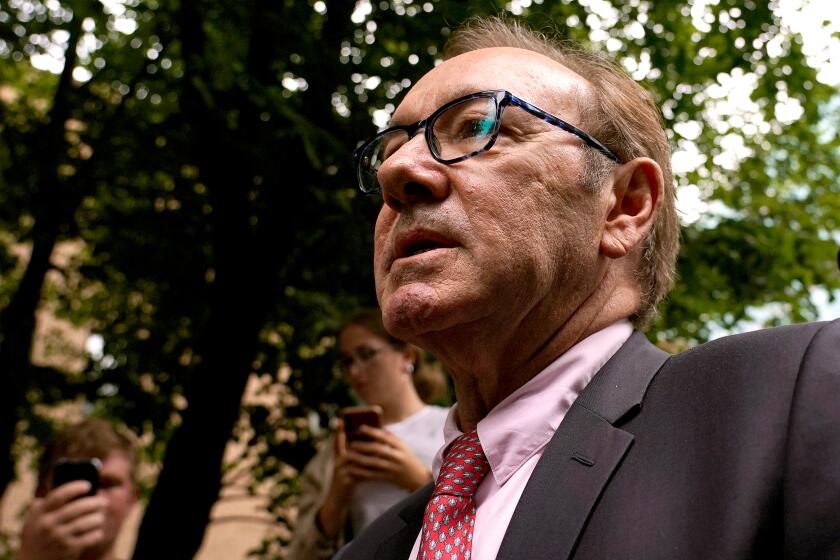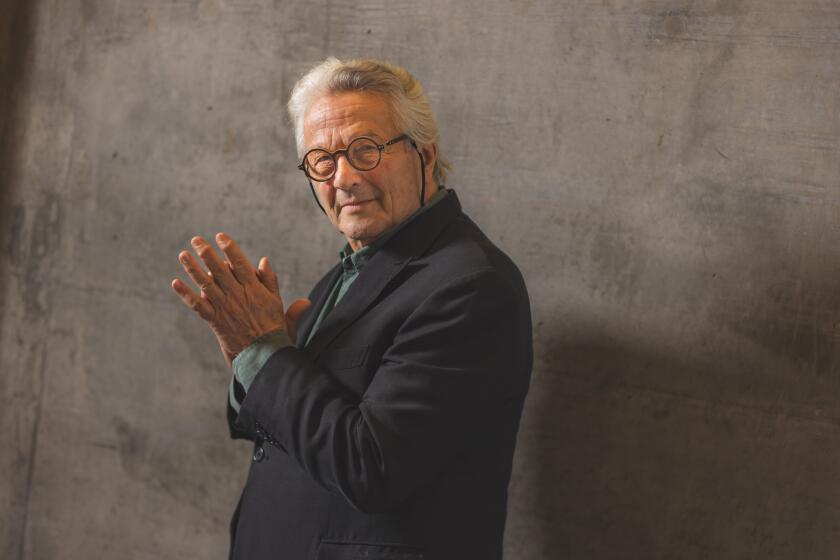ON THE TRAIL OF THE FLYING ‘A’ STUDIO
Yes. There were movie studios before Hollywood was Hollywood .
But finding memorabilia from those ephemeral film-making companies that dotted the country 75 years ago could transform an enthused silent-film buff into a snarling scavenger.
Bob Birchard, who has been hot on the trail of the Flying “A” Studios in Santa Barbara for 22 years, has found the early footage and historical footnotes elusive at times--but he’s found them. Found enough of them, in fact, to exhibit at the Santa Barbara Historical Museum. And he can bare his teeth only in a satisfied grin.
“It’s a reasonably comprehensive record of study,” said Birchard, 37, who owns 90% of the production shots, posters, scrapbooks and other movie mementos on display there through Friday. “But it’s not totally complete.”
The American Film Manufacturing Co. settled in Santa Barbara in the summer of 1912, stamping its territory there with a winged-”A” logo. At one point before its fold 11 years later, the company was the largest on the West Coast, producing more than 1,200 silent films, maybe a hundred of which still survive, Birchard said.
Billing its mainstay as Westerns--”filmed in real western locations”--Flying “A” was the training ground for an elite group of directors. Among them: Victor Fleming (who went on to direct “Gone With the Wind” and “The Wizard of Oz”), Allan Dwan (the studio’s first director, who later made “Suez,” “Heidi” and the 1922 “Robin Hood,” with Douglas Fairbanks), Irving Cummings (“Hollywood Cavalcade”), George Marshall, Henry King, Frank Borzage, Marshall (Mickey) Neilan and B. Reaves (Breezy) Eason (best known for action sequences like the chariot race in “Ben Hur,” 1926).
“It’s sort of a unique legacy,” said Birchard, 37, a sound editor for Disney Studios. “I don’t think any one of the early studios can boast of (such directors).”
Besides nearly 600 Westerns, Flying “A” churned out comedies, society dramas, adaptations of popular stage plays and novels and films of social conscience. It created a sensation in 1916 when Audrey Munsen--known as “the woman with the perfect body”--bared it all in “Purity,” and it turned out a monster hit in 1919 with “Six Feet Four,” a rousing Western melodrama that pulled the company from the brink of bankruptcy, despite the movie’s mega-budget, Birchard said.
Another film footnote for the studio was “The Diamond From the Sky,” which, at 30-plus episodes in a continuing story, was the longest-running movie serial ever, Birchard said.
And the stars? “You may not have heard of them today,” he said, but in the heyday at Flying “A,” the actors were widely celebrated. Some popular names were J. Warren Kerrigan (voted most popular male star in 1912 by readers of Photoplay magazine), Vivian Rich, Mary Miles Minter, William Russell, Richard Bennett, May Allison and Harold Lockwood.
The first fan magazines emerged tangentially with Flying “A.” “If you read them,” Birchard said, “you realize that the movies in 1911 were like rock ‘n’ roll was in 1956--it was a big craze, and it was a young person’s thing. Kids went to the movies and they were fanatic about them.” Consequently, the actors “were big stars.”
One star sparked Birchard’s interest in Flying “A.” When he was 15, Jodie Eason, an actor with the studio and sister of director “Breezy” Eason, came to a silent film show that Birchard organized at his church.
“She said, ‘I worked at Flying ‘A’--it didn’t mean a thing to me,” Birchard recalled recently. Eason gave him some production shots and stills of company actors, adding to a collection of memorabilia, including silent films, that the teen-ager had already acquired. Birchard later talked to all the former company members, then in their 80s and 90s, who were still around long after their films had disappeared.
Flying “A”--which began when Chicago film makers Samuel Hutchinson and Charles J. Hite decided to make movies independently to avoid the license fees being charged by big film-manufacturing companies--was crippled in the wake of World War I, and folded when its longer, more expensive feature films were not distributed effectively enough to profit the company or compete with larger studios.
With the company’s demise, most of the films went back to Chicago and into distribution centers, Birchard said. “And I don’t think anyone knows for sure what happened to all of them.”
Other Flying “A” memorabilia is just as sparse--especially movie advertising posters, which have become hot commodities on the collectors’ market.
Most of the Flying “A” troupe never knew their distinct place in film history, Birchard said. They lived only to see their work as outdated, disposable. “The features came along, and the shorts were no longer useful. Sound came along, and silent films were no longer useful. Color came along and black-and-white was no longer useful. . . . So all their hopes (for posterity) were never realized.”
But in Birchard--who, as a motion-picture sound editor, can offer “no explanation for” his interest in silent films--and others who preserve the story of early film, perhaps those hopes yet will have some realization.
“The interesting thing about this to me is that most people look back on the past and think, ‘Gee, how different everything was then.’ I don’t think it’s different at all. The external trappings change, the styles change, the clothes change. But the basic emotions are the same,” he said.
“Show business was a big, big business back then. Just like today.”
The exhibit, “Before Hollywood: Movies in Santa Barbara,” is at the Santa Barbara Historical Society, 136 East de la Guerra St., Santa Barbara. Information: (805) 966-1601.
More to Read
Only good movies
Get the Indie Focus newsletter, Mark Olsen's weekly guide to the world of cinema.
You may occasionally receive promotional content from the Los Angeles Times.
